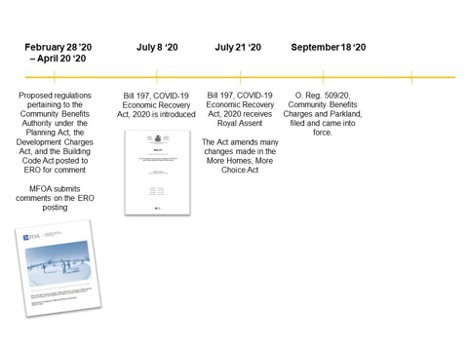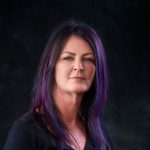Ontario’s More Homes, More Choices Act could mean more opportunities for developers to help build more holistically healthy communities.
When the Act became law in June 2019, it introduced not only changes to Ontario’s Planning Act, but also revised the Development Charges Act.
To take advantage of this new system — which requires municipalities to approve projects in more compressed timelines and which gives them more flexibility in asking developers for cash or community benefits — we strongly advise that do your homework before the municipality asks for it. Be prepared.
Expected to meet tighter timelines, municipalities could be more demanding in determining whether an application is complete. It’s best for you to have your studies finished as you hand in your proposal. Similarly, a time-saving and strategic approach would be to have an appraisal in hand before you begin to discuss community benefits.
Key points
Looking back, under the Development Charges Act, 1997, the scope of services was limited to hard services – notably water, wastewater and stormwater management, along with roads – and there was a 10% discount applied on the capital cost of soft services like library and recreational programs.
In addition to the changes to the More Homes, More Choices Act, there is also Bill 197, the COVID-19 Economic Recovery Act, which passed in July, 2020, as well as Ontario Regulation 509/20 Community Benefits and Parkland, which came into effect on Sept. 18, 2020.
So what does all this mean? In an eblast to its members, the Municipal Finance Officers’ Association (MFOA) highlighted these changes:
- The maximum Community Benefit Charge = 4% of land value for a residential development
- Municipalities must prepare annual reports re. the accounts for the Community Benefits Charges Account and the parkland dedication account
- Some developments are exempt: long-term care homes, retirement homes, universities and colleges and non-profit housing
- Eligible services under the Development Charges Act are no longer subject to the 10% mandatory discount
- Municipalities can update their DC bylaws to recover 100% of the eligible costs
For Toronto’s chief planner Gregg Lintern, it’s about community. “We’re not changing just for the sake of making more money, but changing the investment in communities and making people’s lives better,” he said. “That takes leadership.”
It’s About Community
Burlington’s director of city building Heather MacDonald agreed the new approach is about community. “Burlington was very successful at using Section 37 of the Planning Act to build affordable housing,” she told a BILD webinar.
Section 37, titled An Essential Tool for Building Healthier Neighbourhoods, empowered municipalities to allow height and/or density increases in exchange for community benefits, such as preserving heritage resources, providing community space in the development or agreeing to providing a certain number of units at affordable prices. Some municipalities used that effectively.
“We’re very concerned that the tool is not available in the same way now. We were just embarking on an affordable housing strategy,” MacDonald added.
Barrie has used the existing tool as it intensifies and adds housing to the only Urban Growth Centre north of the GTA – downtown Barrie. Barrie’s General Manager of Infrastructure and Growth Andrea Miller highlighted a project that boosts the affordable housing supply, while intensifying Barrie real estate in the core and helping the city achieve the higher density Ontario now requires in the outer ring.
“Help us to be innovative,” she told the BILD webinar late last year.
The first in the city, The 5 Points consists of 203 residential condominium units as well as ground-floor commercial, located on the northwest corner of the city’s iconic intersection not far from the lake.
As well as nine affordable units, the community benefits include a 1,000-square-foot public square and $10,000 in furnishings.

Surge in Developments
Likely by design, the city has since seen a surge in developments that include affordable housing, as the community has a low 3.2-per cent vacancy rate, according to the CMHC.
Another plan just north on Bayfield Street blends market and affordable housing in 108 units. It has yet to receive city approval.
Brampton’s Commissioner of Planning and Development Richard Forward said the updated community benefits could support developers and builders who consider the needs of the community they’re building, while the municipalities work to increase transparency and build more well-rounded neighbourhoods.
“At the end of the day, I want a culture of caring,” he said – and that’s a two-way street, a relationship between the municipality and those who are building it.
Municipal legal specialists, Dentons, noted the new community benefits regime removes any incentive for municipalities to “under-zone” areas, so they can then collect height and density bonuses. Instead, the new law replaces that much-criticized approach with an incentive to update zoning bylaws. Read more from Dentons.
Timeline



Source: Municipal Finance Officers’ Association (MFOA) Hub for Bill 108
Takeaways
Even in the most-cordial relationships, disagreements can occur. That’s why you should have your property appraisal in hand. With that, the discussions about community benefits begin with a serve, so to speak, from your side of the court.
In instances in which the developer and municipality disagree on the amount of the charge, Davies Howe outlines the timeline and procedure. The firm notes the landowner or developer can begin by providing an appraisal of the site being developed. A dispute resolution process requires a third appraisal if the developer’s and the municipality’s appraisals differ more than five per cent. Click here for more details.
For more information and updates about these policy changes, visit our Public Policy page. You can also check out the Municipal Finance Officers’ Association’s YouTube video series or read the eblast and provincial submissions, available here. For more information about the Barrie housing market, including Barrie real estate opportunities and commercial property listings, contact Squarefoot today.


Reader Interactions